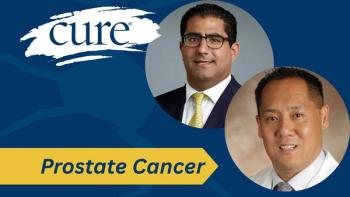
Study Shows Talking to a Nurse Can Help You Quit Smoking
Smoking is a major cause of cancer in the United States, but data from a recent study show that talking to a nurse may help some patients quit the habit.
According to a recent study, being hospitalized is a great time for smoking intervention, making nurses potential key players in the process. In fact, self-reported quit rates among hospital patients more than doubled after nurse intervention.
“They’re more motivated and nurses can explain how smoking harms their health, including slowing healing,” lead author Sonia Duffy, Ph.D., R.N., F.A.A.N., a professor of nursing at The Ohio State University, said in a statement.
The 2016 Cancer Progress Report states that tobacco use accounts for approximately 30 percent of cancer deaths in the United States. The same report also states that not using tobacco is the single best way a person can prevent cancer from developing.
In this study, 1,528 patients in five community hospitals, all within the Michigan Trinity Health System, were evaluated over the course of three years. Three of the hospitals used an intervention program, while the other two continued with normal patient care routines.
Tobacco Tactics, the program designed for this study, first trained nurses and other staff on strategies to help smokers quit, including identifying triggers and planning strategies to manage cravings. They also learned which quit-smoking aids were likely to help which type of smoker, based on the smoker’s addiction and past attempts at quitting.
Once a patient agreed to participate, the nurse worked with a doctor to choose the best-suited tools for that patient. Most times, this meant nicotine replacement therapy. However, it could also have included an antidepressant, or Chantix (varenicline), a prescription smoking-cessation medication. Nurses carried a pocket card with reminders on how to help smokers.
Patient resources included a brochure and a card listing the number for the Tobacco Quit Line (1-800-QUIT-NOW). If the patient expressed interest, they could also receive a DVD and the Tobacco Tactics manual, a magazine providing information on tobacco and health, along with tips for quitting.
After being discharged, patients received a call from a volunteer five times in the first month. This call was used to check in on the patient and give support.
Six months after discharge, patients were evaluated based on self-reported quit rate, which was then confirmed by a urine test. The study concluded that 16.5 percent of the smokers from the intervention hospitals reported quitting, compared with 5.7 percent, which was the intervention hospitals’ rate prior to the program being enacted. While researchers found a twofold difference among the two groups of patients in the lab results of the urine test (8.0 percent vs 4.3 percent), that information was determined not to be statistically significant.
The training provided by Tobacco Tactics is not something that nurses are often exposed to at nursing schools, Duffy noted. Even in hospitals, counseling on smoking cessation is lacking in the United States. When counseling does occur in a hospital, it’s not often done by a nurse.
However, Duffy pointed out, “Nurses have the greatest access to patients, they have relationships with patients and they can relate the benefits of quitting to the patient’s medical condition.”
She added that inpatients are usually just recommended to the Tobacco Quit Line. While this resource is effective, it’s often only used by individuals who are already highly motivated to quit. “The rest,” Duffy said, “are falling through the cracks.” Because of this gap, she stressed the importance of multiple approaches to help everyone quit.




